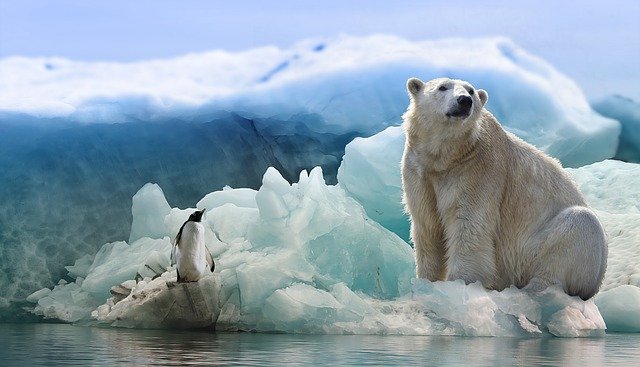Arctic, Antarctic. North pole, south pole. But beyond this geographic location, are there real differences between the two?
Between the Arctic and the Antarctic, you can sometimes get lost. These two places on the planet located at the antipodes of each other present many differences.
The term arctic comes from the Greek arktos which means bear. In antiquity, navigators took the direction of the Big Dipper and the Little Dipper to get there. These indeed always shine above the northern horizon.
Arctic and Antarctic: geological differences
Above all, it should be noted that Antarctica is a continent in its own right. Located on the south-pole side of our planet, it is some 98% covered in ice. The limits of the Arctic, on the other hand, are more blurred. The territory surrounds the North Pole and spans several continents since it includes six countries bordering the Arctic Ocean: Canada, the United States, Greenland (Denmark), Russia, Norway, and Iceland. Sometimes we also add part of Sweden and Finland. And the Arctic is essentially made up of a frozen ocean known as sea ice.
In Antarctica, there are mainly mountainous landscapes and some volcanoes overlooking the ocean. The Arctic is flatter, although it also presents some alpine landscapes.
Different populations
Very few animal species inhabit Antarctica and are still in colonies, such as the famous emperor penguins. Ditto for humans. You will hardly find more than a few scientists installed there during their research.
In the Arctic, on the other hand, many animal species live the fox, the reindeer, the walrus, the seal, and of course, the famous polar bear ! Indigenous peoples (the Inuit, Lapps, etc.) have also adapted to the difficult climatic conditions that prevail there.
Temperature: which is colder?
The coldest temperatures ever recorded on Earth were recorded in Antarctica. The result of a combination of factors: altitude, low sunshine, isolation by an ocean current, and the reflective power of the ice that covers the continent. If on the coasts, the average temperature is -10 ° C, inland, it reaches -20 ° C at 1,000 m altitude and -55 ° C in Vostok which is located at 3,500 m altitude.
In the Arctic, even if the thermometer sometimes drops very low — down to -70 ° C recorded at North Ice — the annual average is around -10 ° C. In particular because the annual amplitudes — temperature differences between summer and winter — can be significant. And in recent years, the average temperatures recorded have continued to rise. In November 2016, they peaked at 15 to 20 ° C above seasonal norms: -5 ° C instead of -25 ° C!
